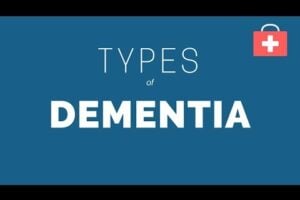F18 allows doctors to “see” the plaques that cause Alzheimer’s on a PET scan of a living brain. It was approved in the U.S. in April 2012 and has revolutionized the diagnosing of dementia. Learn how it works and why the European Union has followed the United States’ lead.
INDIANAPOLIS — Florbetapir F18 is Ely Lilly’s version of a new type of tracer coming to market from half a dozen pharmaceutical companies. Based on F18 (Fluorine 18), the revolutionary F18 tracers help scan for Alzheimer’s plaque.
Amyvid is the shortened brand-name for florbetapir F18.
Eli Lilly and Company and Avid Radiopharmaceuticals, Inc., a wholly owned subsidiary of Lilly, announced that Amyvid received marketing authorization from the European Commission. It can now be used as a diagnostic radiopharmaceutical indicated for Positron Emission Tomography (PET) imaging of beta-amyloid neuritic plaque density in the brains of adult patients with cognitive impairment who are being evaluated for Alzheimer’s disease and other causes of cognitive impairment. Amyvid should be used in conjunction with a clinical evaluation.[1]
Alzheimer’s Disease is one of many possible causes of cognitive impairment, which can make diagnosis challenging.[2],[3] Alzheimer’s Disease and other causes of cognitive impairment share many overlapping symptoms, including deficiencies in memory, visuospatial ability, executive function, behavior, and language.[2],[3]
It is estimated that up to one in five patients receive a wrong diagnosis when told they have Alzheimer’s. Though clinically diagnosed with probable Alzheimer’s Disease during life, they do not exhibit Alzheimer’s Disease pathology upon autopsy.[4],[5] F18 technology promises to change that for the better.
“We believe that Amyvid fills an unmet need in the medical community, providing physicians with important information about the presence or absence of beta-amyloid plaques that can help identify the cause of their patients’ cognitive symptoms,” said Diane Bakaysa, Amyvid global brand development leader. “This is important because, if, based on negative Amyvid findings and clinical assessment, it is determined that Alzheimer’s Disease is not the cause of cognitive impairment, a physician can avoid unnecessary or potentially harmful treatments associated with a misdiagnosis of Alzheimer’s Disease.”[6],[7],[8]
Beginning in the second quarter of 2013, Amyvid will be available in select areas within the European Union.
Amyvid is indicated for PET imaging of the brain to estimate beta-amyloid neuritic plaque density in adult patients with cognitive impairment who are being evaluated for Alzheimer’s Disease (AD) and other causes of cognitive decline.[9]
If a person has symptoms of dementia, a positive scan inidcates it is probably Alzheimer’s, while a negative scan means it probably is not.
Explaining this in more detail, a negative Amyvid scan indicates sparse to no neuritic plaques and is inconsistent with a neuropathological diagnosis of AD at the time of image acquisition; a negative scan result reduces the likelihood that a patient’s cognitive impairment is due to AD. A positive Amyvid scan indicates moderate to frequent amyloid neuritic plaques; neuropathological examination has shown this amount of amyloid neuritic plaque is present in patients with AD, but may also be present in patients with other types of neurologic conditions as well as older people with normal cognition.[9]
Amyvid is an adjunct to other diagnostic evaluations. An Amyvid scan by itself will not establish whether or not a patient has Alzheimer’s. It is a tool that can dramatically improve the precision of established tests for Alzheimer’s and must be used in conjunction with other tests to arrive at a diagnosis. A positive Amyvid scan does not establish a diagnosis of AD or other cognitive disorder. Safety and effectiveness of Amyvid have not been established for predicting development of dementia or other neurologic condition, or monitoring responses to therapies.[9]
About Amyvid
Amyvid is a radioactive diagnostic agent that is injected into the bloodstream, where it crosses the blood-brain barrier and selectively binds to amyloid plaques. The fluorine 18 (F 18) isotope produces a positron signal, which is detected by a PET scanner.[9],[10] Physicians who read Amyvid PET scans should complete a comprehensive training program available through live events or online at AmyvidTraining.com.[9]
Indications and Usage[9]
In the United States, Amyvid is indicated for Positron Emission Tomography imaging (PET Scan) of the brain to estimate beta-amyloid neuritic plaque density in adult patients with cognitive impairment who are being evaluated for Alzheimer’s Disease (AD) and other causes of cognitive decline.
A negative Amyvid scan indicates sparse to no neuritic plaques and is inconsistent with a neuropathological diagnosis of AD at the time of image acquisition; a negative scan result reduces the likelihood that a patient’s cognitive impairment is due to AD. A positive Amyvid scan indicates moderate to frequent amyloid neuritic plaques; neuropathological examination has shown this amount of amyloid neuritic plaque is present in patients with AD, but may also be present in patients with other types of neurologic conditions as well as older people with normal cognition. Amyvid is an adjunct to other diagnostic evaluations.
Limitations of Use:
A positive Amyvid scan does not establish a diagnosis of AD or other cognitive disorder. Additionally, the safety and effectiveness of Amyvid have not been established for predicting development of dementia or other neurologic condition, or monitoring responses to therapies.
Important Safety Information[9]
WARNINGS AND PRECAUTIONS
Risk for Image Misinterpretation and Other Errors
- Errors may occur in the Amyvid estimation of brain neuritic plaque density during image interpretation
- Image interpretation should be performed independently of the patient’s clinical information. The use of clinical information in the interpretation of Amyvid images has not been evaluated and may lead to errors. Other errors may be due to extensive brain atrophy that limits the ability to distinguish gray and white matter on the Amyvid scan as well as motion artifacts that distort the image
- Amyvid scan results are indicative of the brain neuritic amyloid plaque content only at the time of image acquisition and a negative scan result does not preclude the development of brain amyloid in the future
Radiation Risk
- Amyvid, similar to other radiopharmaceuticals, contributes to a patient’s overall long-term cumulative radiation exposure. Long-term cumulative radiation exposure is associated with an increased risk of cancer. Ensure safe handling to protect patients and health care workers from unintentional radiation exposure
About Eli Lilly and Company
Lilly, a leading innovation-driven corporation, is developing a growing portfolio of pharmaceutical products by applying the latest research from its own worldwide laboratories and from collaborations with eminent scientific organizations. Headquartered in Indianapolis, Ind., Lilly provides answers—through medicines and information—for some of the world’s most urgent medical needs.
Amyvid™ is a trademark of Eli Lilly and Company.
[1]Amyvid [package insert]. European Union. Eli Lilly & Co.; 2013.
[2]Balasa M, Gelpi E, Antonell A, et al; for the Neurological Tissue Bank/University of Barcelona/Hospital Clínic NTB/UB/HC Collaborative Group. Clinical features and APOE genotype of pathologically proven early-onset Alzheimer disease. Neurology. 2011;76(20):1720—1725.
[3]Alzheimer’s Association. 2012 Alzheimer’s disease facts and figures. Alzheimers Dement. 2012;8(2):131—168.
[4] Lim A, Tsuang D, Kukull W, et al. Clinico-neuropathological correlation of Alzheimer’s disease in a community based case series. J Am Geriatr Soc. 1999;47(5):564—569.
[5] Petrovitch H, White LR, Ross GW, et al. Accuracy of clinical criteria for AD in the Honolulu-Asia Aging Study, a population-based study. Neurology. 2001;57(2):226—234.
[6]Alzheimer’s Association. 2011 Alzheimer’s disease facts and figures. Alzheimers Dement. 2011;7(2):208—244.
[7] Boise L, Neal MB, Kaye J. Dementia assessment in primary care: results from a study in three managed care systems. J Gerontol A Biol Sci Med Sci. 2004;59(6):621—626.
[8] Mendez MF, Shapira JS, McMurtray A, et al. Preliminary findings: behavioral worsening on donepezil in patients with frontotemporal dementia. Am J Geriatr Psychiatry. 2007;15(1):84—87.
[9] Amyvid [package insert]. Indianapolis, IN: Lilly USA, LLC; 2012.
[10] Choi SR, Golding G, Zhuang Z, et al. Preclinical properties of 18F-AV-45: a PET agent for Aβ plaques in the brain. J Nucl Med. 2009;50(11):1887—1894.
SOURCE:
Eli Lilly and Company
News Provided by Acquire Media











